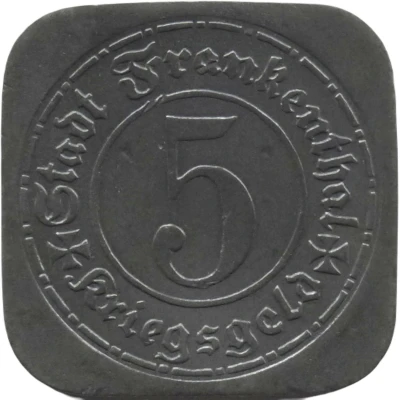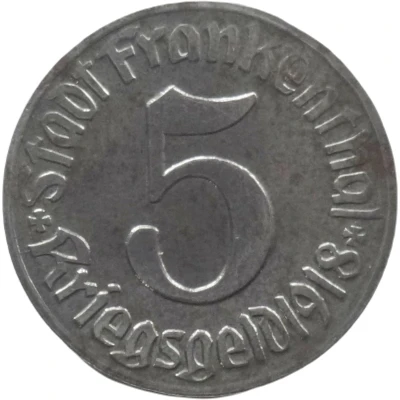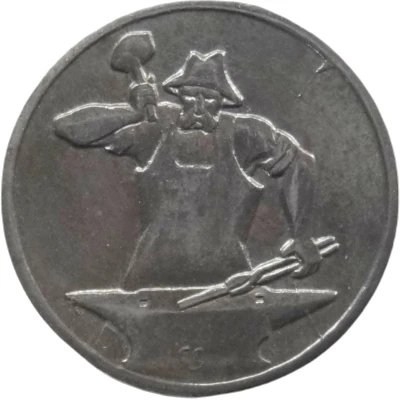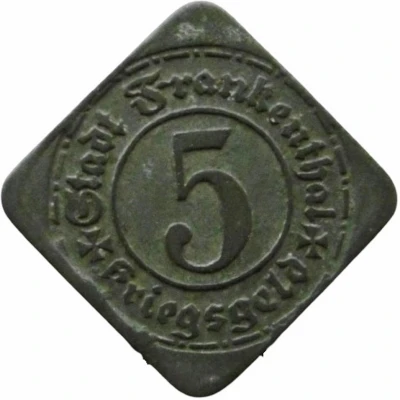
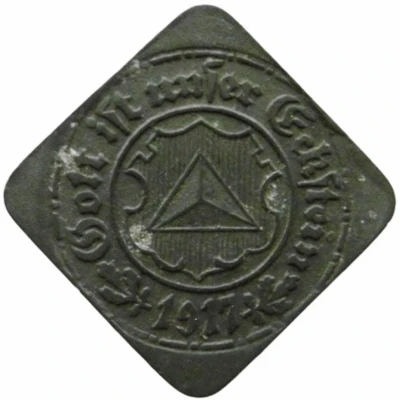

© Willem63 (CC BY-NC-SA)
5 Pfennigs - Frankenthal
1917 year| Zinc | 1.6 g | - |
| Issuer | City of Frankenthal (Palatinate) (Federal state of Bavaria) |
|---|---|
| Emperor | William II (Wilhelm II) (1888-1918) |
| Type | Standard circulation coin |
| Year | 1917 |
| Value | 5 Pfennigs (5 Pfennige) (0.05) |
| Currency | Mark (1914-1924) |
| Composition | Zinc |
| Weight | 1.6 g |
| Size | 17.0 mm |
| Thickness | 1.0 mm |
| Shape | Square with rounded corners |
| Technique | Milled |
| Orientation | Medal alignment ↑↑ |
| Demonetized | Yes |
| Updated | 2024-10-04 |
| Numista | N#24736 |
|---|---|
| Rarity index | 70% |
Reverse
Pearl/dash circle, legend circling solid line circle with Coat of Arms centered
Script: Latin (Fraktur blackletter)
Lettering:
Gott ist unser Eckstein
1917
Lettering (regular font):
Gott ist unser Eckstein
1917
Edge
Plain
Comment
Issuing authority: [Stadt, Pfalz]Interesting fact
The 5 Pfennigs - Frankenthal 1917 coin from the City of Frankenthal (Palatinate) in the Federal state of Bavaria, made of Zinc and weighing 1.6 g, is interesting because it was minted during a time of economic and political turmoil in Germany. The coin was issued in 1917, during World War I, when the country was experiencing severe economic difficulties, including inflation and a shortage of metals. As a result, the German government was forced to use alternative metals, such as zinc, to produce coins. This coin is a unique example of how a country's currency can be impacted by historical events.
Price
| Date | Mintage | VG | F | VF | XF | AU | UNC |
|---|---|---|---|---|---|---|---|
| 1917 | - | - | - | - | - | - |
Values in the table are based on evaluations by sales realized on Internet platforms. They serve as an indication only for 5 Pfennigs - Frankenthal 1917 coin.
